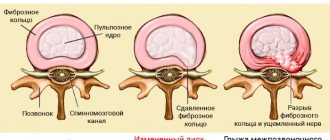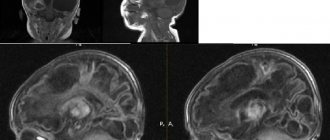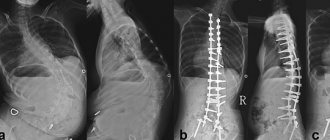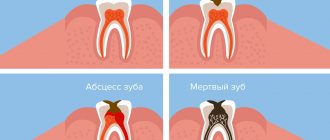Why does the muscle under the eye twitch?
The life of a modern person with its problems and constant workload provokes a nervous environment, lack of sleep and constant stress. Naturally, such phenomena do not pass without leaving traces for human health: accumulating, all the negativity suddenly manifests itself very unexpectedly - the nerve under the eye begins to twitch and you do not know what to do. Initially, the patient does not react in any way to such an annoying phenomenon, but then his irritation and anxiety begin to increase.
It makes no sense to deny the fact: if there is twitching under the eye, this is a sign that the body is signaling overwork. Perhaps this is normal overwork and the person needs a good rest, but such a sign can also signal certain problems of the internal organs. If a nervous tic begins to recur, this fact cannot be ignored. Hurry to a neurologist - he will determine the reason why your eye is twitching and prescribe the optimal treatment.
You should not neglect medical help, because such a seemingly innocent sign can be associated with serious illnesses: stroke, multiple sclerosis, head injury, middle ear disease and others.
The problem “a nerve is twitching under the eye, what should I do?” may initially seem not entirely serious and even funny. Perhaps someone finds it funny to watch a friend's right eye twitch or the vein pulsate. But if the nerve under the eye twitches for a week or even a month, it’s no longer a laughing matter.
Why is this happening? There is a nerve twitching under the eye, what should I do? Let's try to figure it out.
Why is constant muscle twitching dangerous?
Constant muscle twitching is dangerous to the musculoskeletal health of the human body in the long run. It is important to understand that muscle twitching in different parts of the body leads to a disruption in the transmission of nerve impulses. As a result, some of the myocytes may contract while the underlying tissue relaxes. This is how ectopic foci of unstable muscle tension (trigger points) are formed. They cause constant muscle pain and partial destruction of myofibrils.
The feeling of muscle twitching is not just an unpleasant feeling. Blood microcirculation is disrupted at the capillary level, and dysmetabolic processes begin. Such a muscle loses its ability to provide complete diffuse nutrition to the cartilage tissue of large joints of the lower upper extremities and intervertebral discs. As a result, deforming osteoarthritis, osteochondrosis and other pathologies develop.
Even if you are sure that the twitching is associated with osteochondrosis, do not hesitate to seek medical help. The sooner you start treatment, the higher the chances of a full recovery.
general characteristics
Tremor at rest is a type of hyperkinesis, which is violent involuntary movements of an oscillatory nature involving any part of the body, occurring in the absence of purposeful motor activity.
Has a rhythmic character. It is performed around a certain fixed point. Appears as a result of synchronous or alternating contractions of antagonist muscles. The resting tremor is of medium amplitude, its frequency characteristics are 3-6 Hz. It is often combined with other types of trembling (postural, intentional). Trembling movements can be local or generalized. They differ depending on the motor pattern. Tremors in the fingers often resemble “rolling pills” or “counting coins” in appearance. Head tremor can occur as a “yes-yes” or “no-no” type, tremors of the limbs can occur as pronation-supination, flexion-extension. The first place in prevalence is occupied by tremor of the fingers. Next in descending order are tremors of the lower jaw, lips, tongue, head, etc.
Why does the nerve under the eye twitch and what to do?
Because the main causes of a twitching eye are:
- stress;
- lack of sleep;
- weakened nervous system;
then it is these nuances that you should pay serious attention to.
Not only adults, but also children, especially preschoolers, suffer from nervous tics. It is this age category that has the most unstable nervous system - this is explained by the peculiarities of the development of the child’s body. Conflict family situations and a negative attitude from parents can provoke the development of a child’s nervous tic.
Doctors say that the muscle under the eye twitches is often caused by eye fatigue (for example, due to spending a long time in front of a computer monitor). In this case, you do not need treatment - rest more often and do this exercise: closing your eyes, take a few energetic breaths and exhale. Repeat the exercise 5–6 times with short breaks.
Why does the syndrome appear?
Disruption of nerve conduction provokes the development of myospasms. Among the primary reasons causing deviations in the passage of the impulse are:
- reduction of the lumen of the interdiscal canal due to thinning of the cartilage layer between the vertebrae;
- compression of the root by displaced bones or spinous processes.
Both mechanisms result in nerve compression. But in the first case, the compression will be constant, and in the second, it will periodically occur under pathological load on the spine (sharp turns of the body, lifting heavy objects).
Often the condition is aggravated by previous back injuries, a history of protrusions or herniated discs.
What are the causes of contractions in children and adolescents
Often, this phenomenon in this category is not a sign of serious pathologies, but still, contacting a doctor would not be amiss: this will help to find out why the child periodically experiences muscle twitching.
Experts attribute the appearance of such an anomaly to several factors. The most common is genetic predisposition. In addition, numerous studies have found that girls suffer from muscle twitching much less often than boys, while in the latter it occurs in a more severe form.
Quite often, muscle twitching occurs after:
- stress;
- past illness;
- a large number of unpleasant procedures (injections, hospital stay).
And yet, one of the particular factors in the appearance of this phenomenon is the “unhealthy” atmosphere in the family, which has an extremely negative effect on the child’s nervous system.
To correct this condition, it is recommended to exclude provoking causes, begin to follow a diet and sleep schedule, and normalize physical activity. Family psychotherapy can also be used.
Preventive actions
In the life of a modern person there are many factors that can provoke the appearance of osteochondrosis. It is impossible to exclude all harmful effects, but following the proposed recommendations will reduce the likelihood of developing the disease:
- Correct posture. This will ensure an even load on the spinal column.
- Complete rest. A tired person tenses the muscles of the body, the back slouches, and this leads to pressure on some areas of the intervertebral discs.
- Avoid prolonged immobility. If you need to drive a car or work at a computer for a long time, you should take short breaks for active rest.
- Exercise. Extensive physical activity is undesirable; swimming, yoga or therapeutic exercises would be optimal.
The main causes of twitching under the eye
Twitching under the eye (this feature is also called a nervous tic) can occur for a variety of reasons. With such a problem, it becomes clear to everyone around that the person’s eyelid or under the eye is twitching. It looks ugly, and a person feels obvious discomfort and inconvenience from it.
So, what causes can be identified for twitching under the eye?
- Physical and mental fatigue.
- Lack of sleep.
- Tense rhythm of work.
- Accumulating fatigue from regular and long trips.
- Head injuries.
- Postoperative weakness.
- Consequence of birth trauma.
- Headaches associated with meningitis.
- Heredity.
- Presence of worms or other parasites.
Get tested for the presence of helminths and other parasites in the body. If this is the underlying cause, treatment is carried out using medications: Vermox, Mezamin, Praziquantel, Tinidazole, Ornidazole, Triziquantel and others. It depends on the type of helminths.
In addition to medications, herbal remedies, ozone therapy and homeopathic remedies are used quite effectively. You can use traditional methods:
- eat pumpkin seeds;
- sauerkraut juice;
- tansy decoction, etc.
The nerve under the eye twitches: what to do?
Visit a neurologist, as the cause may be a head or even brain injury, which changes the flow of nerve impulses to the facial muscles. In some patients, the so-called nystagmus developing due to impaired contractility of the motor activity of the eye muscles. In such cases, spontaneous movements of the eyeballs and contractions of the eyelid muscles are observed.
Once the causes of the tic have been established, treatment can begin. But first of all, we need to focus on prevention, since preventing a disease is much easier than then getting rid of it.
- Try to stick to the regime: sleep at least 7 - 8 hours a day.
- Watch your diet: it should be balanced.
- It is necessary to calm the nervous system. If you cannot cope on your own, seek the help of a neurologist or psychologist. The use of soothing herbal remedies or herbal infusions (mint, motherwort, hop cones, lemon balm, etc.) also gives a good effect.
- Instead of strong tea and coffee, drink green tea.
- Wear sunglasses. They will protect your eyes from direct sunlight and ultraviolet radiation, from dust, wind, etc.
- Don't forget to apply compresses.
- It is advisable to reduce your workload and spend less time in front of a PC monitor and TV.
- Special exercises for the eyes (relaxing, special complex) also have a positive effect.
Nervous tic on the face: causes
With vascular lesions of the brain, atherosclerosis, a stroke or even tuberculosis lesions, various disturbances in facial expressions can occur, including tics;
When various parts of the cerebral cortex are affected, similar symptoms may occur. This most often occurs when the frontal lobes are affected.
In the case of tumors and other neoplasms, most often it is not tics that occur, but focal symptoms, for example, weakness and paresis of facial muscles, nasal and slurred speech, and various oculomotor disorders occur, for example, divergent strabismus when the peduncle of the abducens nerve is pressed.
Most often, tics and other facial disorders occur from damage to the extrapyramidal system. Moreover, this can be either hyperkinesis or hypokinesis, when the face resembles an amicable, motionless mask, devoid of any emotions. This happens with parkinsonism.
With hepatocerebral dystrophy, in which copper metabolism is disrupted, facial tics are accompanied by symptoms such as a mask-like face, drooping of the lower jaw, violent laughter and crying.
In addition to really serious reasons, functional disorders lead to tics, for example, such as asthenia after illnesses, neuroinfections, chronic fatigue, vitamin deficiency, and emerging depression.
If a nervous tic appears on a child’s face shortly after birth , then we can hope that by the age of one year everything will go away. Tic is associated with immaturity of the nervous system. And if hyperkinesis occurs in a child of primary school age, then you need to deal with the daily routine and increased workload. It is necessary to change the daily routine, reduce the study load. A child should spend at least 9 hours sleeping. Therefore, glycine can be useful for nervous tics in a child if given at night.
Why does tremor occur at rest?
Parkinson's disease
Rest tremor is the most typical type of tremor in this pathology. It is most clearly expressed in the trembling and trembling-rigid forms of the disease. A typical feature of tremor in Parkinson's disease is its asymmetric nature. The symptom is combined with hypokinesia, rigidity and postural disturbances. The severity of manifestations gradually increases.
Juvenile parkinsonism
The disease is hereditary in nature and manifests itself at a young age (up to 25 years). Manifested by tremor, muscle rigidity and hypokinesia. Unlike Parkinson's disease, juvenile parkinsonism is not characterized by asymmetry of symptoms; the disorders are equally pronounced on both sides. Statokinetic tremor predominates; rest tremor is not detected in all patients; it can occur in the later stages of the disease.
Rest tremor
Secondary parkinsonism
Postural tremor is typical for this type of parkinsonism. Trembling at rest is an optional symptom and can be detected in patients with advanced forms of the pathology. The disorders are symmetrical, the manifestations progress faster than in patients with primary parkinsonism, the severity of tremor varies depending on the cause of the disease.
Secondary parkinsonism occurs after traumatic brain injury, encephalitis, and general infections. It can form against the background of intracerebral tumors, frequent episodes of hypoglycemia, hydrocephalus, and manganese intoxication in drug addicts. The cause of drug-induced parkinsonism is the use of antipsychotics and anticonvulsants. After extensive strokes and lacunar infarctions, vascular parkinsonism is observed with cerebral atherosclerosis.
Parkinsonism plus
In neurology, this term refers to degenerative pathologies of the central nervous system with parkinsonism syndrome. As with other types of secondary disorders, rest tremor is not the main symptom; it occurs in some patients:
- Wilson's disease.
Hereditary pathology caused by the accumulation of copper in tissues. In the trembling form, tremor, bradyllalia, bradykinesia, epileptic seizures, and psychoorganic syndrome are observed. - Dementia with Lewy bodies.
Occurs in old age. Accompanied by mental, cognitive, autonomic and motor disorders. At an early stage, parkinsonism is detected in 50% of patients, and with progression – in 80%. - Multiple sclerosis.
Characteristic is the variety of opening options. Possible weakness in the legs, numbness, optic neuritis, dizziness, nystagmus. Tremor appears as the disease progresses, is combined with paresis, is predominantly intentional in nature, and is rarely observed at rest.
Why does the muscle under the eye twitch?
Any negative emotion in a person, if not released, can result in some kind of nervous symptoms. As a result, the muscle under the eye begins to twitch, which is far from the worst thing - much worse if diseases of the internal organs occur.
Changes in neuromuscular tissue provoke a painful change in the body: the muscle under the eye twitches. Usually the lower eyelid twitches under the eye and it is not possible to consciously stop it. The process of tic formation is explained by spontaneous contractions of facial muscles. They can be represented by one muscle or a group of muscles. Usually the nerve begins to twitch suddenly, but in the same way the tic spontaneously stops.
The muscle twitching under the eye may indicate the presence of a nervous tic. In the first case, the process is caused by psycho-emotional trauma or damage to the central nervous system.
A secondary nervous tic is formed as a result of exposure to repeated diseases. The main etiological factors of such involuntary muscle contraction are:
- psycho-emotional states;
- genetic relationship (Tourette's syndrome);
- accumulated fatigue;
- constant irritating factors;
- diseases of the central nervous system;
- endocrine diseases (for example, diabetes);
- viral infections;
- injury to the facial nerve and its endings;
- eye strain due to prolonged viewing of TV shows or working on a PC;
- disturbed sleep patterns;
- lack of B vitamins and magnesium;
- various forms of neuroses.
In many cases, the cause is hard mental work.
The muscle under the eye twitches: signs and causes
A person may not even always be aware of the moment and understand why the eye is twitching. In most cases, this phenomenon is not even felt. First of all, this applies to children, since adults almost always feel twitching under the eye.
Very often, people feel contractions of the facial muscles and can also prevent them. The eye twitch may only last for a few seconds, but it can be repeated for a long time - for hours or even several days. Sometimes the tic disappears when the environment changes, but this does not always happen. It happens that even at rest, the twitching intensifies, causing even greater discomfort.
Why does the muscle under the eye twitch? Most people do not notice any additional symptoms, such as worsened vision or pain. Nerve pain can occur only during facial nerve paralysis, and also if the tic becomes evidence of serious diseases of the central nervous system.
As a rule, the nerve under the eye twitches only on one side, but sometimes twitching of the nerves on the other side of the face is also observed. This process complicates the emotional state of the patient. Children suffering from nervous eye twitching are usually uncommunicative and try to avoid the company of their peers, and this negatively affects their socialization.
How to treat muscle twitching
Before treating muscle twitching, you need to conduct a thorough diagnosis and make an accurate diagnosis. This is a symptom, not a disease. Therefore, it will not be possible to treat it separately. After making a diagnosis, the doctor develops an individual course of therapy.
To treat muscle twitching due to osteochondrosis, we use the following methods:
- traction traction of the spinal column – relieves compression from the radicular nerves and restores the physiological dimensions of the intervertebral spaces, thereby quickly eliminating pain and discomfort in the muscles;
- osteopathy - to restore the normal position of the vertebral bodies, improve the condition of soft tissues (ligaments, muscles and tendons);
- massage – to restore microcirculation of blood and lymphatic fluid;
- therapeutic exercises and kinesiotherapy to restore the tone and performance of the muscular frame of the back.
In some cases, we use laser therapy, physiotherapy, electrical myostimulation and other types of therapeutic interventions. The course of treatment is developed individually. We recommend making an appointment for a free appointment with a vertebrologist, neurologist or orthopedist at our manual therapy clinic in Moscow.
How to get rid of the symptoms that have arisen
To do this, you need to treat the underlying disease. After reducing the severity of the pathological process, the symptom will disappear. But twitching is dangerous to health, so to reduce the severity of muscle spasms, patients are prescribed medications or recommended non-drug methods.
Taking medications
To eliminate increased tone or relieve a person from tiresome twitching, the following is prescribed:
- muscle relaxants (Tinazil, Baclofen);
- antispasmodics (Spazgan);
- nonsteroidal anti-inflammatory drugs (Ibuprofen, Diclofenac);
- vitamin therapy;
- potassium preparations.
If myospasms are accompanied by the appearance of tissue swelling, then diuretics are prescribed. To prevent the loss of beneficial salts that most diuretics remove, it is recommended to additionally drink Panangin or Asparkam.
Massage treatments
Massage has a beneficial effect on tissues:
- improves trophism;
- eliminates stagnation of blood and lymph, reducing swelling;
- relaxes;
- reduces pain discomfort.
You can learn the technique of self-massage or undergo treatment from a specialist. Proper massaging of the skin and muscle structures will eliminate hypertonicity and prevent the recurrence of twitching.
Exercise therapy
If the patient’s condition allows, then to reduce muscle spasm it is allowed to do the following:
- Shaking. Uniform vibrating movements during shaking will improve blood circulation and eliminate hypertension.
- Tension-relaxation. The essence of the exercise is to “subordinate” the contractile function to brain commands. It is required to work the muscles in the area of involuntary contractions. You can raise and lower your limbs, bend and straighten your arms or legs at the joints.
All movements must be smooth and measured - jerking and heavy force load are unacceptable.
We should not forget about regularly performing a complex of physical therapy, selected by a doctor. Exercises to strengthen muscles with osteochondrosis will help create a natural muscle corset and reduce the risk of nerve compression due to pathological displacement of the vertebrae.
Additional treatment methods
During treatment of the underlying disease, it is enough for the patient to take medications, do massage and exercise to eliminate myospasms. To enhance the effect of the treatment, patients are often prescribed physical therapy:
- Magnet. Radiation improves trophism, prevents blood stagnation and spastic manifestations.
- Electrophoresis. Physiotherapy with medication will have a local relaxing effect on the spasmodic area.
- Acupuncture. Acupressure stimulation stimulates blood circulation and restores the conductivity of nerve impulses.
- Hirudotherapy. Applying leeches to places where blood flow is impaired can reduce the ischemia that occurs in the tissues.
Additionally, mud or paraffin applications, laser therapy and other physical procedures may be prescribed.
Nerve twitches under the eye: diagnosis and treatment
In order for the doctor to prescribe optimal therapy, you should resort to diagnostics, including information:
- about the spread of the disease;
- about the examination of the patient;
- about conducting research.
The examination is carried out by a neurologist. Consultation with an ophthalmologist and neurologist is also recommended. To be sure that there are no tumors in the skull, an X-ray examination or MRI should be performed. A psychiatrist’s opinion is also important in diagnosis, in order to exclude possible organic diseases in the brain.
Therapy should eliminate the main etiological factor. For example, a nervous tic was triggered by a viral infection. In this case, antiviral drugs are prescribed. If the eye twitches due to emotional stress, the patient is advised to rest completely.
If such a process is observed in a child, the doctor must give his parents an explanation that it is necessary to eliminate all conflicts in the family, as well as normalize the home environment and visit a psychotherapist. To eliminate the manifestations of nervous tics, sedatives and muscle relaxants are prescribed. A good effect is achieved with the help of herbal preparations (valerian or motherwort). In certain cases, Botox injections are used.
Twitching under the eye, what should I do? If you experience systematic twitching, you should consult an ophthalmologist and a neurologist. If no pain is observed during twitching, the following measures are taken:
- Factors that have a negative impact on the patient’s psychological state are eliminated.
- The patient is advised to increase sleep duration.
- Minimize the amount of time you spend in front of the computer and TV.
- Special gymnastics are prescribed: with your eyes closed, you need to count to 65, and then open your eyes wide. Repeat 5 times.
- You should take natural sedatives: decoctions of chamomile, lemon balm, and valerian extract.
Diagnostics
Neurologists are involved in determining the cause of tremor at rest. The specialist finds out when the symptom first appeared, how it changed over time, and what manifestations it was accompanied by. Explores life history, identifies circumstances that could contribute to the development of secondary parkinsonism. Performs a neurological examination using the Clinical Tremor Rating Scale to determine symptom severity. To clarify the diagnosis, the following procedures are performed:
- MRI of the brain.
In juvenile parkinsonism and Parkinson's disease, changes are usually absent. The technique makes it possible to differentiate parkinsonism plus and determine the nature of structural damage in certain types of secondary parkinsonism (for example, vascular). According to indications, PET-CT and SPECT are supplemented. - Tremorometry
. Makes it possible to evaluate the accuracy and coordination of movements, the amplitude and frequency of trembling. Used to study tremor of the hands during movement and at rest. The tremorogram is recorded using accelerometer, piezo and strain gauge methods. - Electrophysiological techniques
. According to electroneurography data, tremor parameters are indirectly studied. Using electromyography, tremors are differentiated from other movement disorders. - Computer stabilography.
Indicated for pathologies accompanied not only by rest tremor, but also by postural tremors. It is carried out using a stabilometric platform to study ground reactions. - Lab tests
. Toxicological tests are carried out if a connection between parkinsonian symptoms and intoxication is suspected. Determination of copper in the urine and ceruloplasmin in the blood can confirm the presence of Wilson's disease. - Other techniques
. For vascular disorders, angiography and transcranial Doppler ultrasound are informative. In case of volumetric processes, the results of an echoencephalogram are indicative.
Examination by a neurologist
Treatment of neurotic tics
Light sedatives, proper nutrition (you need to eat often, 4-5 times a day) and walks are enough. Protect yourself from negative information and scary films with scenes of violence. Don't forget about moderate physical activity in the fresh air.
If there was a traumatic situation, consult a psychotherapist. Individual and group therapy can be effective. The doctor determines the technique. In extreme cases, antidepressants or other medications that correct the mental state may be prescribed. In addition to them, the doctor may prescribe muscle relaxants - medications that relax the muscles.
Nervous tics, as a rule, affect neurotics, not psychotics. A neurotic person is characterized by emotional instability. He is unsure of himself, may have phobias and manifestations of asthenia (lethargy, apathy). Treatment often ends with a neurologist.
When urgent medical attention is needed
Despite the discomfort and pain, most myospasms are relatively harmless and can be treated at home. Emergency medical assistance is required in the following cases:
- migraine-like pain in the temples and back of the head;
- a sharp rise in pressure;
- confusion;
- chest pain similar to an attack of ischemic heart disease;
- tachycardia and/or arrhythmia;
- difficulty breathing;
- limitation of limb mobility.
These symptoms are a reason to call a medical team. The absence of urgent treatment for the listed signs of deterioration in health can lead to the development of a stroke or heart attack, or provoke paralysis of the arms or legs.
What to do if there is twitching under the right or left eye?
Twitching of the left or right eye occurs quite often in people. It can be either congenital or acquired. Let us dwell in more detail on acquired twitching. There are 2 types of psycho-emotional trauma:
- acquired as a result of stress (acute);
- chronic form.
If it twitches under the right eye or twitches under the left eye, you cannot leave it to chance. After a certain period of time, the pulsation can change, becoming a nervous tic.
Why is it twitching under my right eye?
Twitching under the right eye can be caused by a variety of reasons. In order to find out the cause, you should urgently visit a doctor. Many people make the mistake of thinking that if a problem concerns the eyes, only an ophthalmologist can solve it.
Why is it twitching under my left eye?
This may be an indicator of hemifacial facial spasm - the onset of a serious illness. If the symptom is also accompanied by noise in the ear, then we can talk about contraction of the stapedial muscle.
Why does the nerve under the eye twitch? In this case, everything is more complicated, since the nerve under the eye twitches and the reasons in vain seem to be of little seriousness. If you study the problem deeper, you will discover the complex human drama behind it. That is why you should seek help from a neurologist, and sometimes a psychotherapist.
Only after finding out the real reason why the eye is twitching, the doctor prescribes sedatives (usually glycine), as well as medications containing calcium (since it is the lack of calcium in the body that affects spontaneous muscle contractions).
However, whatever the reasons why the nerve twitches under the eye, the fact becomes obvious: you will not get by with medications alone.
First of all, follow simple rules:
- get more rest.
- get enough sleep.
- perform simple physical exercises.
- optimize your diet:
- Nuts, soybeans, blueberries, and sea fish will help.
- carbonated water, strong black tea and coffee should be excluded from the diet.
Why does the cheek twitch under the eye: what to do?
The cheek under the eye may twitch due to contractions of the eyeball muscles. And although this does not bring serious inconvenience, it is nevertheless an indicator of certain problems.
If the cheek twitches under the eye, you should find out the exact cause of the occurrence, since frequent twitching can lead to facial hemispasm, causing visual dysfunction. Cheek twitching under the eye causes:
- Frequent stress and unstable psyche. Overexertion of muscles leads to the production of lactic acid and pain.
- Dry eyes caused by prolonged time spent watching TV or PC monitors.
- Lack of magnesium in the body, as well as vitamins B6 and B12.
- Allergies, acute neurotic reactions.
- Diseases of the central nervous system that could exist even in childhood.
Why does the skin under the eye twitch? This is most likely due to spontaneous contraction of the eye muscles. Although there is no obvious discomfort from this, the symptoms can be caused by several problems.
The muscle under the eye twitches, what should I do? It is necessary to find out the cause, since systematic twitching can cause facial hemispasm, which leads to visual dysfunction.
Why does the cheek under the eye twitch? Most likely, one or more of the following reasons occur:
- Prolonged stressful situations, as well as unstable mental states, cause muscle strain. As a result of such processes, lactic acid is produced, causing pain.
- Dry eyes caused by prolonged sitting at a computer monitor.
- Deficiency of vitamins B6 and B12, as well as Mg.
- Various types of allergies.
- Acute neurosis.
My cheek is twitching under my eye, what should I do? To eliminate such an unpleasant manifestation, use quite effective folk methods:
- cold compresses. Soak a piece of cloth with cold water. Apply this compress 3-4 times a day until the twitching stops completely;
- The therapeutic effect also provides complete relaxation. The person must be in a supine position.
It is recommended to consume more foods high in vitamin B and magnesium, since this normalizes the activity of the central nervous system. The most magnesium is found in the following foods:
- in nuts;
- in oatmeal;
- in seaweed;
- in buckwheat;
- in peas.
Compresses will also help with twitching under the eye.
- Scroll the geranium leaves through a meat grinder. Apply such compresses to the pulsating area under the eye for 2 hours. Repeat the procedure for 4–5 days.
- Dissolve a teaspoon of honey in a glass of water. Wet a cotton cloth and apply it to the throbbing muscle for 30 minutes.
- Cooling compress. Lie on your back, relax. Apply a cloth dampened with cold water to the problem area. When changing compresses, keep them for 20–30 minutes. Repeat 3 times a day until you are completely healed.
- Decoction: thoroughly chop and mix 3 parts of plantain, 1 part of oregano and anise seeds. Fill everything with 0.5 liters of boiling water. Add 1 part honey and 1/2 chopped lemon. Cook for 10 minutes. After cooling and straining, drink 2 tbsp. l. 3 times a day before meals.
Twitching under the eye video
Source
Twitching under the eye
Girls, help, maybe someone has had a similar situation or heard something about this. I don’t know what to do anymore. The muscle under my right eye has been pulsating continuously for more than two weeks now. I visited the doctor and she told me that it was a nervous tic and prescribed Life 900 and Gamalete, but I read that they are not allowed during pregnancy (I am planning a pregnancy and there is still a week left before the delay). I drink valerian and motherwort, but nothing helps. What should I do???????











